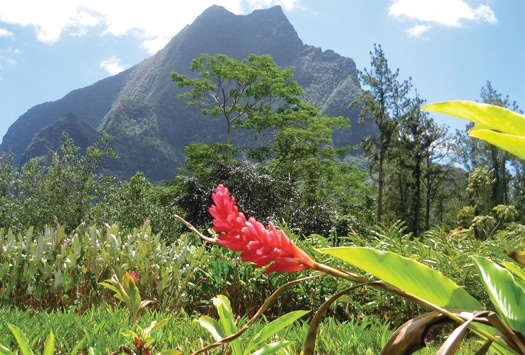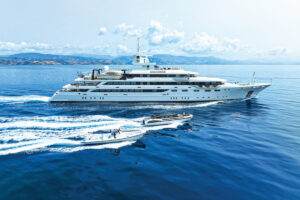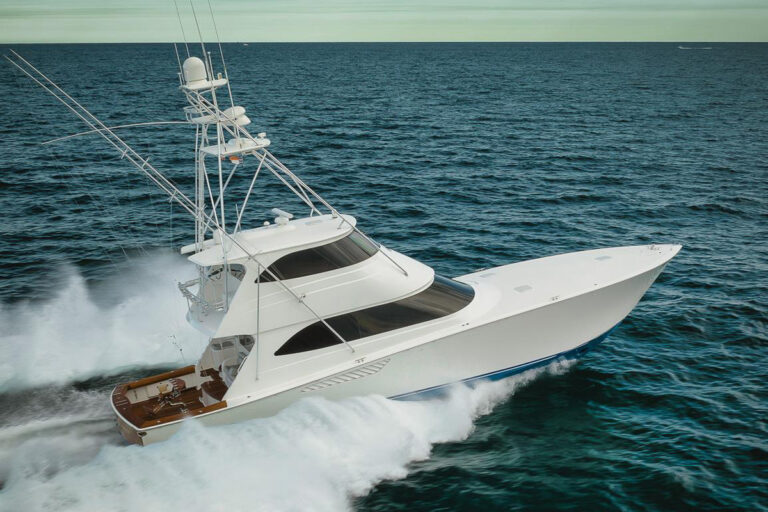
ytgjun09cy1525.jpg
The very best vacation of my life was in French Polynesia, about ten years ago. I was aboard a 101-foot Alloy sailyacht with my brother, a friend, and a crew of six. We did very little in those ten days: Went ashore each day for an hour or two of exploration, snorkeled, had gourmet picnics on atolls. I read 11 books in 10 days-still my record-and what I remember most was sitting on deck, basking in the sun, and looking up from my reading periodically to soak in the exquisite scenery of Tahiti, Moorea, and Bora Bora. I don’t remember a single one of those books, but I’ve relived those vistas a thousand times in the last decade. It was as close to heaven as I’ll probably get.
Gauguin came to French Polynesia, looking for that same heaven, a little more than one hundred years ago-and despite the advent of media to advertise it, airplanes to get you there, and developers to capitalize on it all, the most important aspects of French Polynesia remain unchanged. Its people are friendly and beautiful. Its atmosphere is languorous and sensual. And it’s still staggeringly gorgeous: Crystal-clear lagoons flash jade and turquoise in the sunshine; sapphire bays and deep cobalt seas are parted by cerulean reefs; statuesque emerald mountains loom like chia-covered tikis above it all.
Tahiti
Paradise is not the first impression a visitor to Tahiti will have-in fact, the streets of Papeete, Tahiti’s capital and the point of entry for most international travelers to French Polynesia, are full of honeymooning couples holding hands, looking vaguely dazed and disappointed. Papeete and its environs are dirty, bustling, and low on charm. The key to enjoying Papeete is adjusting your expectations: This isn’t postcard Tahiti, but it is real. It’s the center of business for the Society Islands with all of the gritty commerce that entails.
You can, of course, take refuge in your resort hotel-mine (Le Méridien Tahiti) had a large sandy-bottom pool and a variety of water toys for guests to use. But you may also want to take a 4×4 tour of the island, hike in the Valley of Fataua, or enjoy a guided visit to the Paul Gauguin Museum and the Museum of Tahiti. If you’re a nightlife person, you can dance ’til you drop at one of Papeete’s countless discos or nightclubs. And you definitely do not want to miss les roulottes-the dinner trucks that park on the waterfront at sunset, lowering their side panels to create counters where the hungry perch for Chinese food, pizza, crepes, steak, chips, fish you name it, there’s probably a truck serving it. The food is generally delicious and the atmosphere is always festive.
Moorea
When you’re ready, Moorea is about ten miles to the northwest of Tahiti. You’ll need to brace yourself, because this isn’t just picture-postcard South Pacific-it’s picturepostcard in hi-def. Cook’s Bay and Oponuhu Bay form twin clefts at the top of the heart-shaped island and the lush landscape is steeply mountainous. Pineapple plantations dot the lower slopes where the rich, volcanic soil and tropical weather provide perfect growing conditions.
It’s 37 miles around the base of the island and bikes are a perfect way to get the lay of the land. However, a guided 4×4 tour is also a great idea. Ours took us to the Belvedere Lookout, which has views across the island to Mount Rotui and Cook’s and Opunohu Bays. On the way, we stopped at Titiroa marae, an ancient, stone-girdled clearing once used for community gatherings and human sacrifices. Marae can be found all over the French Pacific, and the silent, eerie air of this one-tucked in the jungle’s shade-put me in just the mood for a visit to the local rum distillery, where we stopped next.

| | |
When you’ve had your fill of exploration, treat yourself to a stop at the Hilton Moorea Lagoon Resort and Spa. Whether you decide to enjoy a spa treatment, a waterfront meal, a cocktail-or, my recommendation-all of these, the views over the 10-acre lagoon offer the ultimate sensation of Polynesian ahhh.
Bora Bora
Bora Bora, roughly 140 miles northwest of Moorea, is often described as the most beautiful island in the world. Even James A. Michener, a man whose best-selling tomes suggested no lack of vocabulary, once described Bora Bora as “so stunning, that there are really no adequate words to describe it.” Believe the hype.
Two extinct volcanos, Mount Pahia and Mount Otemanu, are the towering centerpieces of Bora Bora, which is encircled by a necklace of reef. Cradled between the reef and the island shores is the lagoon-essentially a balmy, crystalline moat that serves as an enormous swimming pool of constantly changing blues and greens.
In Bora Bora, it’s all about the water-you want to look at it or be in it, all the time. And nature obliges: A launch collects you at the airport to take you to your hotel, which is invariably on a gorgeous beach. Once there, you really need to splurge on an over-water bungalow with a glass floor. Mine, at Le Méridien Bora Bora, also had a deck and a stairway to the water for easy snorkeling or swimming access. Book an outing with Shark Boy, where the ridiculously good-looking guide will somehow convince you to swim with stringrays and sharks-and you will love it. At night, you can top off a day like this by taking a water taxi to Jean-Georges Vongerichten’s Lagoon restaurant at the St. Regis for some of the finest cuisine in the South Pacific.
The after-effect of many a tropical vacation is mild withdrawal symptoms: a yearning for balmy breezes, soft white sand, fruity drinks with silly names. But a trip to French Polynesia is so far beyond anything our wee imaginations can conjure that you’re more likely to return to reality with the secret sense that you have been to heaven and, very reluctantly, back.









